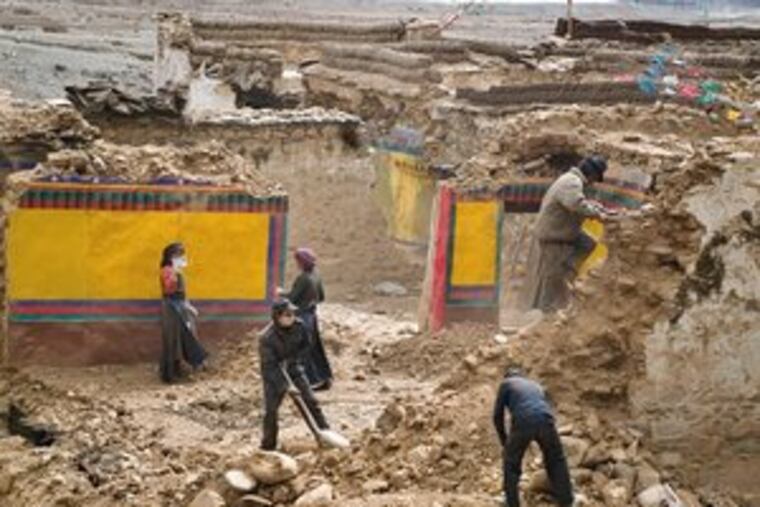Remaking Tibetans' lives
ZENGSHOL, Tibet - In a massive campaign that recalls the socialist engineering of an earlier era, the Chinese government has relocated about 250,000 Tibetans - nearly one-tenth of the population - from scattered rural hamlets to new "socialist villages," ordering them to build housing largely at their own expense and without their consent.

ZENGSHOL, Tibet - In a massive campaign that recalls the socialist engineering of an earlier era, the Chinese government has relocated about 250,000 Tibetans - nearly one-tenth of the population - from scattered rural hamlets to new "socialist villages," ordering them to build housing largely at their own expense and without their consent.
The government calls the year-old project the "comfortable housing program," and its stated aim is a more modern face for this ancient region, which China has controlled since 1950.
It claims that the new housing on main roads, sometimes only a mile from previous homes, will enable small farmers and herders to have access to schools and jobs, as well as better health care and hygiene.
But the broader aim seems to be remaking Tibet - a region with its own culture, language and religious traditions - in order to have firmer political control over its population. It comes as China prepares for an influx of millions of tourists in the run-up to next year's Summer Olympics.
A vital element in the strategy is to displace a revered leader, the Dalai Lama, now 71, who won a Nobel Peace Prize for advocating resistance to the communist government. The government hopes to replace him after he dies with a state-appointed successor, and, in the meantime, it has opened the gates of Tibet to greater numbers of ethnic Han Chinese and tightened control of religious activity.
It is pouring hundreds of millions of dollars into road-building and development projects in Tibet, boosting the economy, maintaining a large military presence, and keeping close tabs on the citizenry through a vast security apparatus of cameras and informants on urban streets and in the monasteries.
Some Tibetans, including farmers interviewed in the village of Zengshol, say they are happy to be in better quarters than their primitive, ancestral homes of mud brick. In other villages, Chinese escorts prevented a visiting reporter from speaking with residents.
Foreign reporters, under tight strictures that largely prevent them from traveling to Tibet except on once-a-year trips under Foreign Ministry guidance, risk being removed from the region if they openly interview people. This report was prepared while undertaking tourism in Tibet.
The first critical account of the remaking of the Tibetan landscape came from Human Rights Watch, which is based in New York and which quoted Tibetans who fled the country, trekking across the Himalayan mountains into Nepal.
On several trips outside Lhasa last month, a McClatchy reporter traversed 800 miles of roads, and witnessed the forced transformation of the countryside.
In the new settlements, cookie-cutter houses line the roads at regular intervals, striking in their uniformity. The settlements varied in size but were mostly towns, larger than the abandoned villages. The red flag of China flew atop every house.
In Zengshol, the faces weren't exactly beaming, but the farmers were reluctant to voice complaints.
Some experts say the relocations have lifted up the impoverished peasantry, and could bring prosperity.
"It's created a building boom," said Melvyn C. Goldstein, a social anthropologist and expert on Tibet at Case Western Reserve University in Cleveland. "I think it's phenomenally successful, more than I would've believed."
Human Rights Watch's witnesses told a different story. Peasants must take out loans of several thousand dollars to pay for the houses, which cost an average of $6,000, even though annual rural incomes hover around $320 in this deeply impoverished region.
"None of those interviewed reported being given the right to challenge or refuse participation in the campaign," the advocacy group said.
Local officials frequently embezzle allocated funds, the group said, and some land that peasants have vacated is being used for mining and other projects. Farmers who can't repay their bank loans forfeit the right to occupy the homes.
Probably the strongest criticism of the program concerns the way it came about: without consultation or consent. The campaign has come with no public debate, a throwback to eras when rural people served as pawns on a development chessboard.